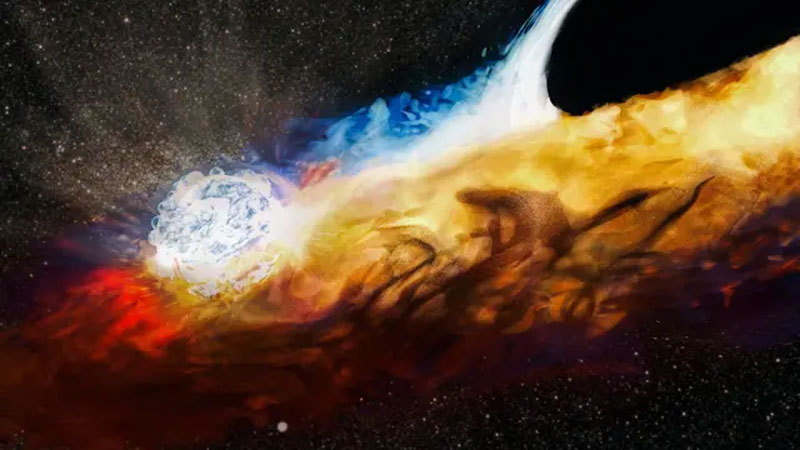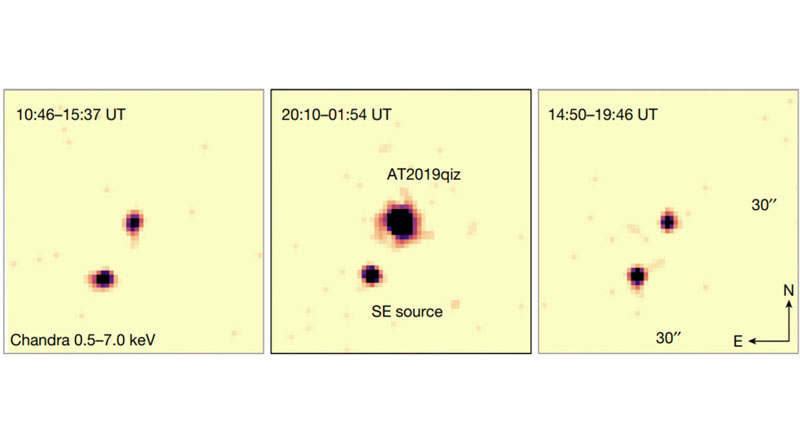Scientists have observed for the first time a series of quasi-periodic soft X-ray flares from a supermassive black hole shortly after a tidal destruction event of a star by a black hole was discovered there. Previously, there was no such clear connection between these two phenomena, which left room for scientific debate.

An artistic representation of the tidal destruction of a star by a black hole. Image source: NASA
«
The star-destroying tidal event, known as AT2019qiz, was first discovered in 2019 by the Palomar Observatory’s Wide Field Optical Telescope. In 2023, astronomers used the Chandra X-ray telescope and the Hubble telescope to study the effects of destruction – traces of matter falling onto the black hole in the form of activity in its accretion disk.
The Chandra data were obtained over three observations, each lasting 4–5 hours. The total exposure of approximately 14 hours showed a weak signal at the beginning and end of the observations and a very strong signal in the middle of the cycle. Observations from NICER, the Swift Observatory and the Indian AstroSat telescope revealed that after the destruction of the star in the tidal event AT2019qiz, faint flares in the soft X-ray range emitted from the region of the black hole approximately every 48 hours.

X-ray images of AT2019qiz acquired on December 9 and 10, 2023. Image source: Matt Nicholl/Nature 2024
Ultraviolet data from the Hubble Observatory helped to understand how much the black hole’s accretion disk has expanded due to a new portion of matter. Scientists suggest that the accretion disk has grown so large that a compact object has begun to dive into it – a star or a black hole that is orbiting around the black hole that tore the star apart. In addition to the fact that scientists can clarify one of the mechanisms for the occurrence of quasiperiodic flares in the X-ray range from black holes, the work done can help get a clearer picture of the size and dynamics of changes in the accretion disk of specific black holes.